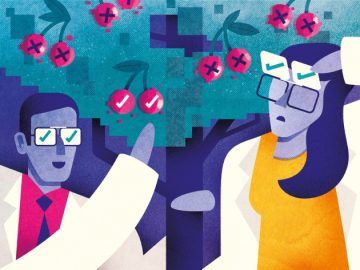Dorothy Bishop in Nature:
 The past decade has seen a raft of efforts to encourage robust, credible research. Some focus on changing incentives, for example by modifying promotion and publication criteria to favour open science over sensational breakthroughs. But attention also needs to be paid to individuals. All-too-human cognitive biases can lead us to see results that aren’t there. Faulty reasoning results in shoddy science, even when the intentions are good.
The past decade has seen a raft of efforts to encourage robust, credible research. Some focus on changing incentives, for example by modifying promotion and publication criteria to favour open science over sensational breakthroughs. But attention also needs to be paid to individuals. All-too-human cognitive biases can lead us to see results that aren’t there. Faulty reasoning results in shoddy science, even when the intentions are good.
Researchers need to become more aware of these pitfalls. Just as lab scientists are not allowed to handle dangerous substances without safety training, researchers should not be allowed anywhere near a P value or similar measure of statistical probability until they have demonstrated that they understand what it means.
We all tend to overlook evidence that contradicts our views. When confronted with new data, our pre-existing ideas can cause us to see structure that isn’t there. This is a form of confirmation bias, whereby we look for and recall information that fits with what we already think. It can be adaptive: humans need to be able to separate out important information and act quickly to get out of danger. But this filtering can lead to scientific error.
Physicist Robert Millikan’s 1913 measurement of the charge on the electron is one example.
More here.
